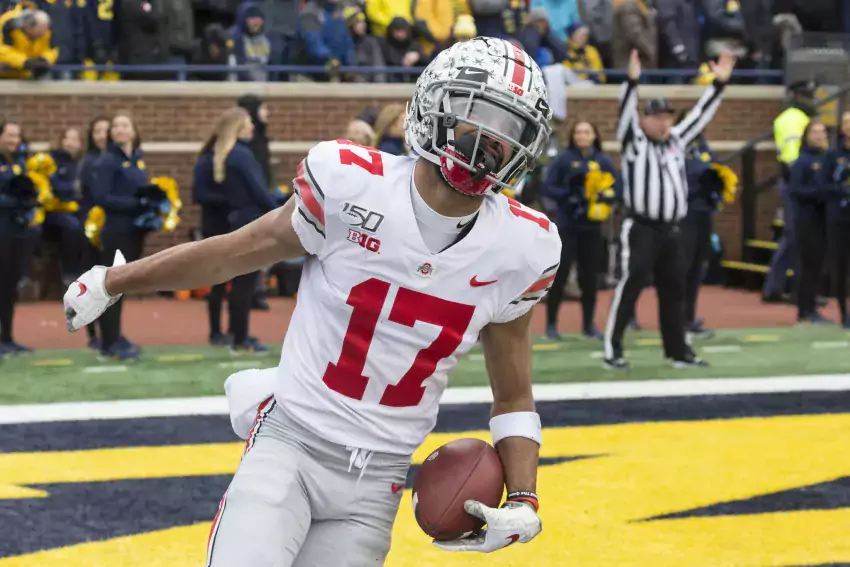pat freiermuth

Previously: Quarterback, Running Back
I'm bringing back this preview feature from before my time off; the exercise is to rank Michigan's opponents, as well as the Wolverines themselves, in each position group. This is particularly useful to do in a year when roster turnover and late-offseason changes (laaaaaaaaaaaaaate-offseason changes) are so prevalent; I'll do my best in these posts to highlight significant opt-outs, opt-ins, and the like.
The series continues with a look at the pass-catchers on this year's schedule. Sorry for several of the photos. Projected starters are in bold, backups in italics.
Tier I: They're Coaching The Five-Stars
 (sigh) [Bryan Fuller]
(sigh) [Bryan Fuller]
1. Ohio State. Bah.
Fine, details. While KJ Hill, Binjimen Victor, and Austin Mack are gone—add in RB JK Dobbins and OSU is down four of their top six receivers from 2019—there's a good chance this unit is better than last year.
I probably don't need to remind you that Michigan got an unwelcome preview of what's to come when Chris Olave and Garrett Wilson both scored long touchdowns in The Game last season. Olave is a smooth outside receiver and potential early-round pick if he enters the NFL Draft in 2021. Wilson is a spectacular athlete who'll get to spend much more time at his more natural slot position with Hill out of the way.
I'm inclined to say those two will outperform their graduated but less talented teammates; Hill went in the seventh round of the draft while Victor and Mack weren't selected but they were the experienced options in an egalitarian passing attack. But, well, you've probably noticed that OSU has added some talent of late, and a whole lot of that talent is at wide receiver:
Just for a fun exercise, if you remove [2017 three-star Ellijah] Gardiner from the equation — no offense, he’s just the lowest-rated player — the average score for this group would be 0.9616. In other words, the average receiver on the OSU roster would be ranked No. 86 in the current recruiting class. And we’re talking about 10 players. The number is only that low because Olave, one of the top receiver prospects in this draft cycle, wasn’t evaluated properly coming out of high school.
If Olave and Wilson don't put up huge numbers it's probably because too many other future NFL players also earned targets. The most likely additional contributors behind them are sophomore Jameson Williams (#82 overall 2019 prospect) and four true freshmen: Julian Fleming (#3 in 2020), Jaxon Smith-Njigba (#29), Gee Scott Jr. (#66), and Mookie Cooper (#93).
While recent OSU offenses haven't featured the tight end, they should get efficient play out of—you guessed it—some former blue-chip recruits. Jeremy Ruckert, the #2 TE in the 2018 class, scored on four of his 14 receptions in 2019. Jake Hausmann (#4 TE in 2016) and Luke Farrell (#7 in 2016) are reliable blockers in frequently deployed two-TE sets; Farrell has also shown some seam-stretching ability in his limited receiving opportunities.
Unlike a certain disgraced former receivers coach, Brian Hartline looks like he's actually coaching the high-level talent at his disposal. He may have the best receivers room in the country. Eat at Arby's.
[Hit THE JUMP because it can't be more of a bummer than that, at least.]
34